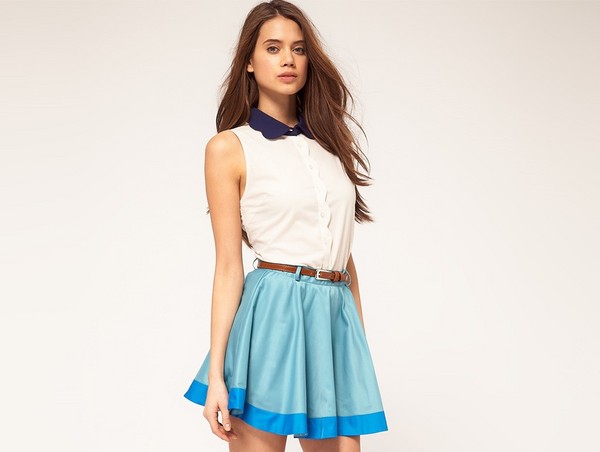Ways to lengthen a skirt. Denim skirts with lace: how to maintain harmony.
Have you ever encountered such a problem that your favorite skirt suddenly became somehow indecently short? Or maybe you are a jack of all trades and constantly get creative with your clothing? It is very simple to alter a skirt by lengthening the product. We suggest using the following tips on how to change the length of a product without buying a new skirt.
Lengthening the skirt at the bottom
The fabric you are going to use for the bottom of your favorite skirt can be matched to the structure of the main product or differ from it. It can be fabric in tone or not, with or without a pattern, transparent or dense. In general, any combination, as long as it really harmonizes.
Primary sewing: baste the selected cut a couple of centimeters away from the bottom of the product. The addition can be sewn end-to-end or over. The first case is suitable if the materials have the same density, then the seam will be almost invisible. In the second case, you can specifically play on the contrast of fabrics.
Depending on how you sew the addition, appropriate processing of the cut edges is required. When joining a seam, only the bottom edge needs to be hemmed; when overlaying, the top edge needs to be overlaid or hemmed ahead of time. It is better not to use heavy fabric as an extension, as it can pull and make the main product shapeless.
Using lace to extend the hem immediately makes a casual skirt look more elegant (for teenage fashion, such a change can become casual). You can also decorate the bottom of the product with lace, for example, make slits or curly cutouts and put fabric there.
Remaking the belt
You can make the skirt longer by altering the belt. Classic skirt styles, however, cannot be changed so easily this way, because you will have to completely embroider the product and add side elements, then the skirt will become wider than usual. In any case, such alteration occurs according to the following principle: you need to take a piece of fabric, cut out a wide belt from it and re-sew the product.
You can play with belt options, for example, in flared skirts you can cut off the belt and insert additional fabric between this strip and the main fabric. Choose fabric of the same density. First, we connect both pieces of fabric (the method of joining the seams is at your discretion), and then fasten the belt.
Add ruffles and flounces
Here's another way to lengthen a skirt - sew on a flounce. From the selected fabric we cut out two semicircles with an internal radius - 1/6 of the width of the bottom of the main product. We measure the lower radius depending on the desired size of the future shuttlecock. We sew one strip to the front edge of the skirt, and the second strip to the back. Then we sew the edges of both strips and finish by processing the bottom seam. Note that more than one flounce can be added, depending on the model of the main skirt.
From season to season, designers let us make our own choice of skirt length. And yet, having looked through this or that collection, you can see that many of them prefer mini or midi skirts, and some prefer maxi. The choice is truly ours.
Having sorted out the dresses and skirts in our wardrobe, we can see that some of them require transformation, because we consider ourselves quite economical and practical, and therefore, we are not in a hurry to part with an item just because its length does not correspond to the model that we would like to buy. see for yourself. What to do? Pick up scissors, as Chanel did, and... What if there is nothing to cut, but on the contrary, you need to lengthen it? Then go to a studio or become a designer yourself.
The possibilities for lengthening a skirt are quite wide: ruffles, frills, flounces, folds, borders, pleating, appliqués, scallops, denticles, inlays, fringe.
David Koma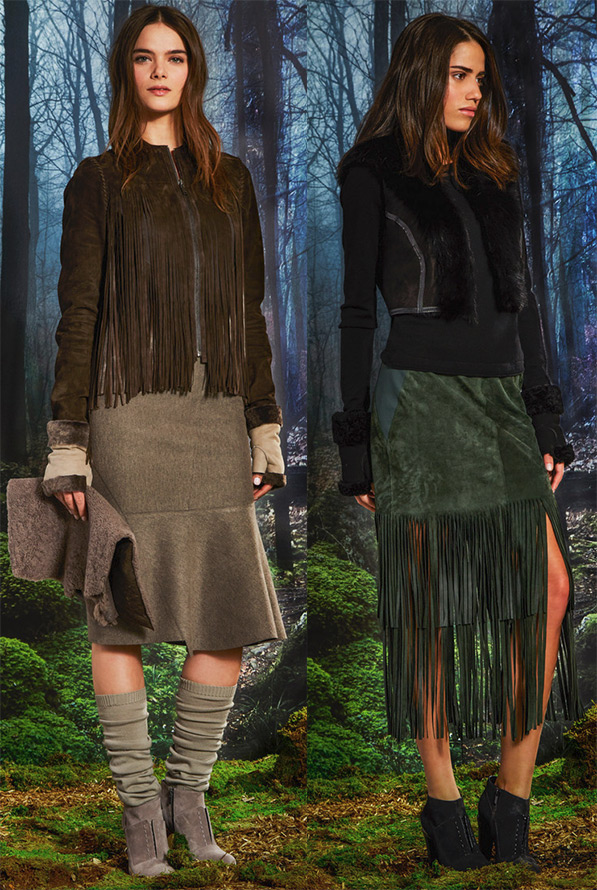
Elie Tahari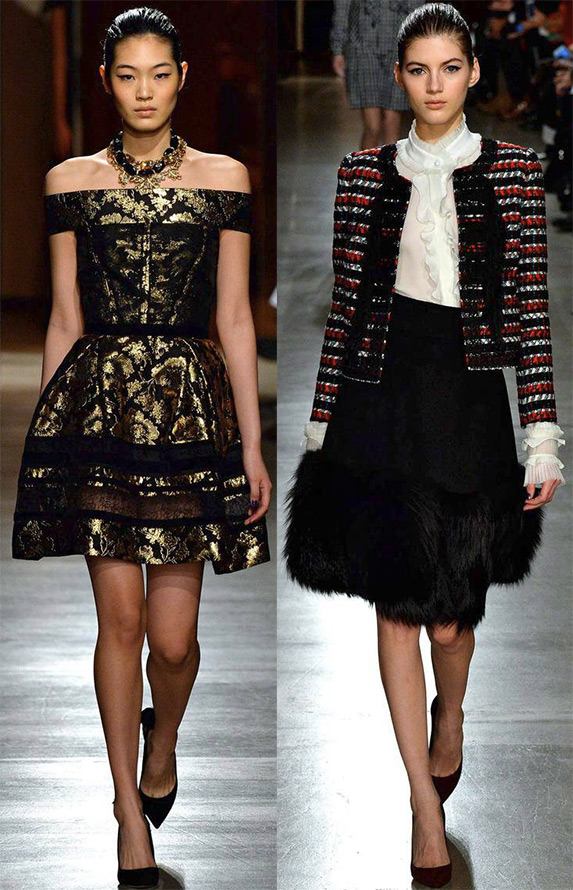
Photo above - Oscar de la Renta
Photo below - Peter Pilotto
If there are remnants of the material from which the skirt or dress is made, then you can make an extension with a part with folds laid on it, and it is not necessary that they go along the entire width of the skirt. You can cut the bottom part on the bias, then we get a model similar to Elie Tahari.
If a different material is used for the lower part of the skirt, then, first of all, it must be of similar quality to the main material. The color can even be contrasting. The model will be interesting if the fabric for the lower part of the skirt is also used for finishing the upper part of the dress or suit. Bottom piece can be connected to skirt different ways. For example, sew directly to the bottom edge of the skirt or to its lining, or you can get creative and make something similar to Milly.
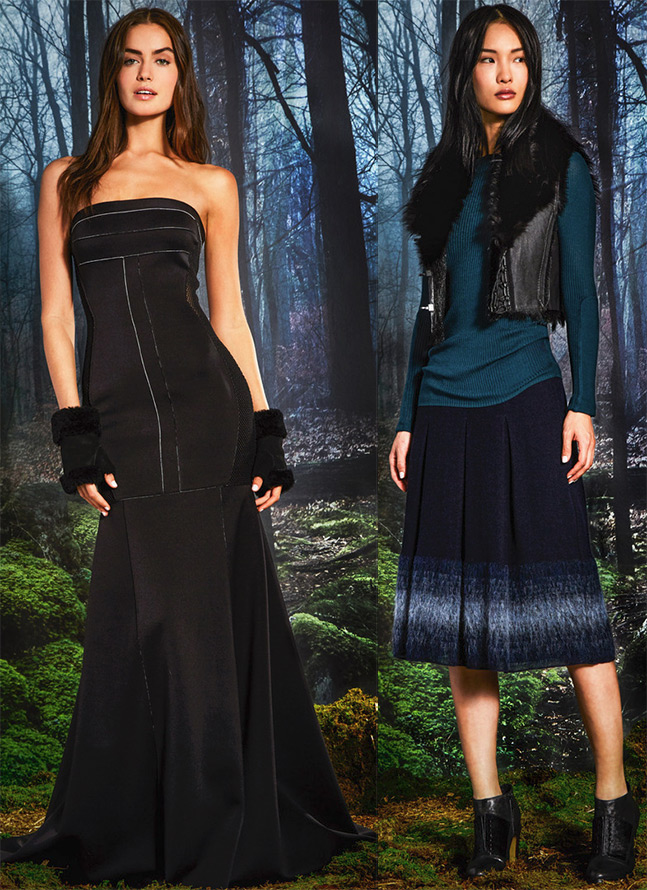
Elie Tahari 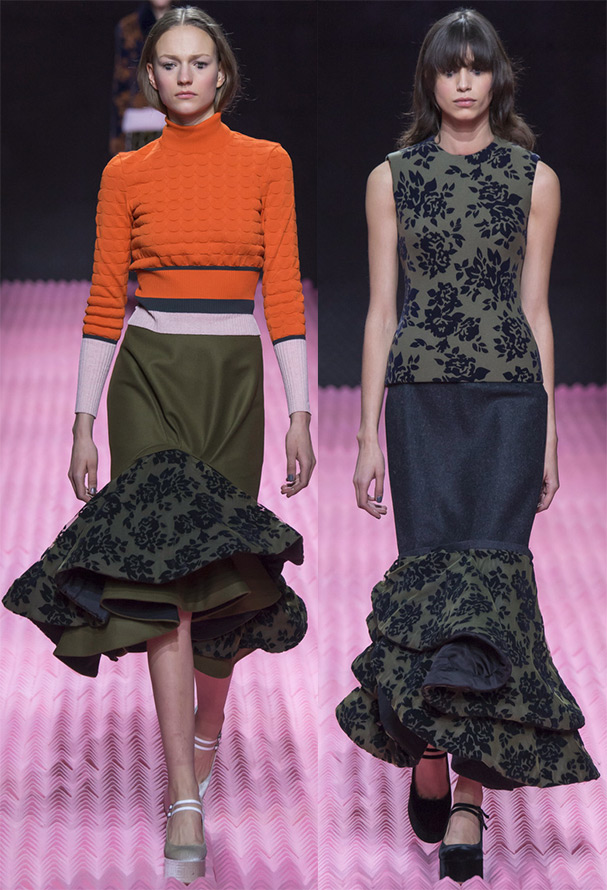
Mary Katrantzou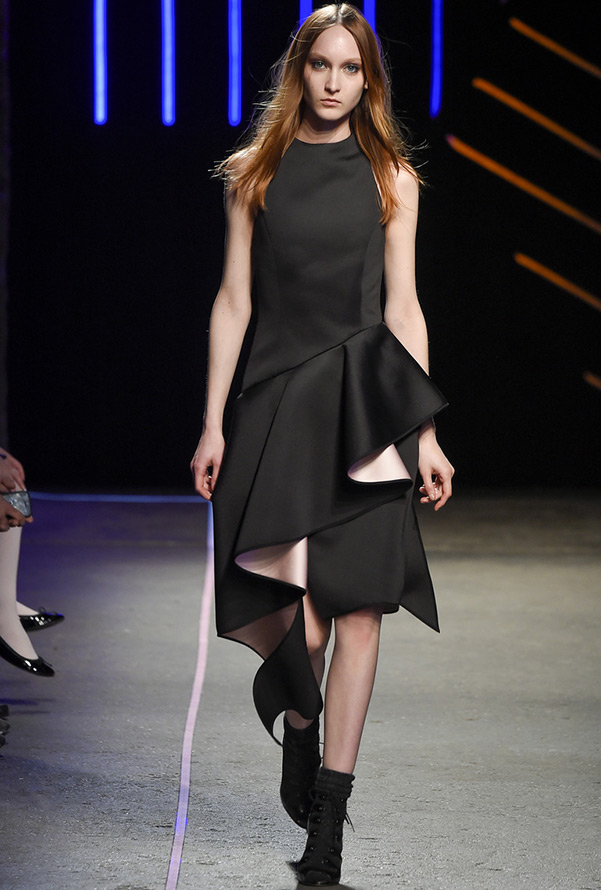
Milly
Sophie Theallet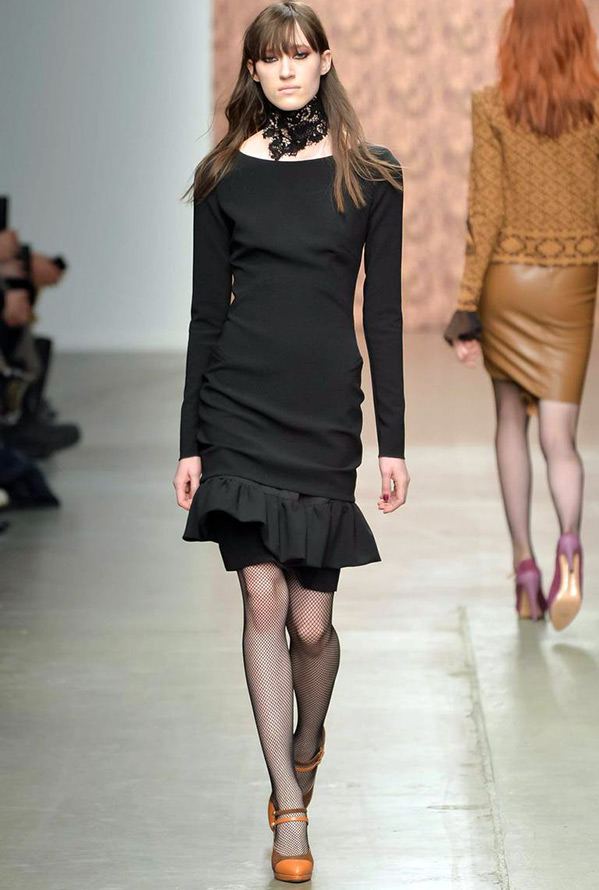
It is possible to lengthen the product along a curly line. An excellent option to follow could be a model from the Emilio de la Morena collection, which uses not only a curly line, but also lace.
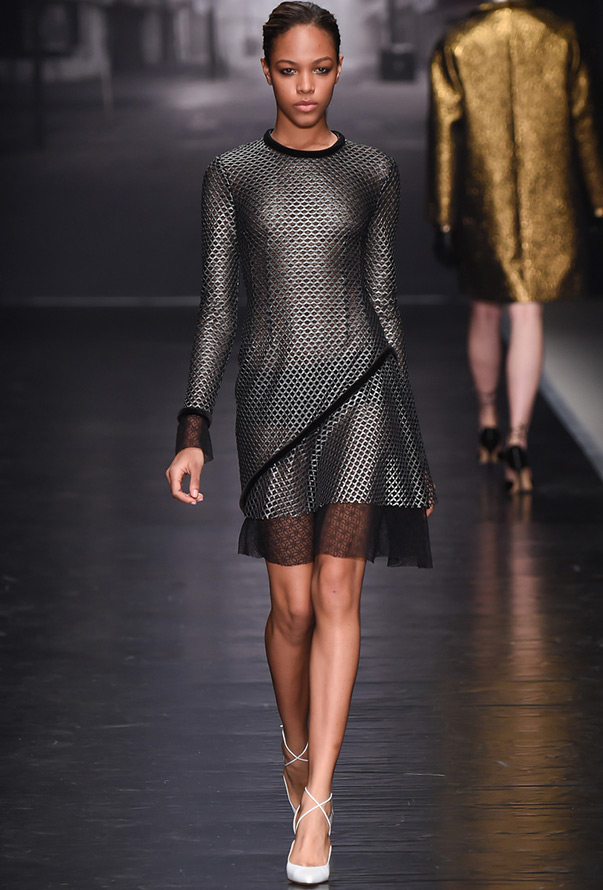
Emilio de la Morena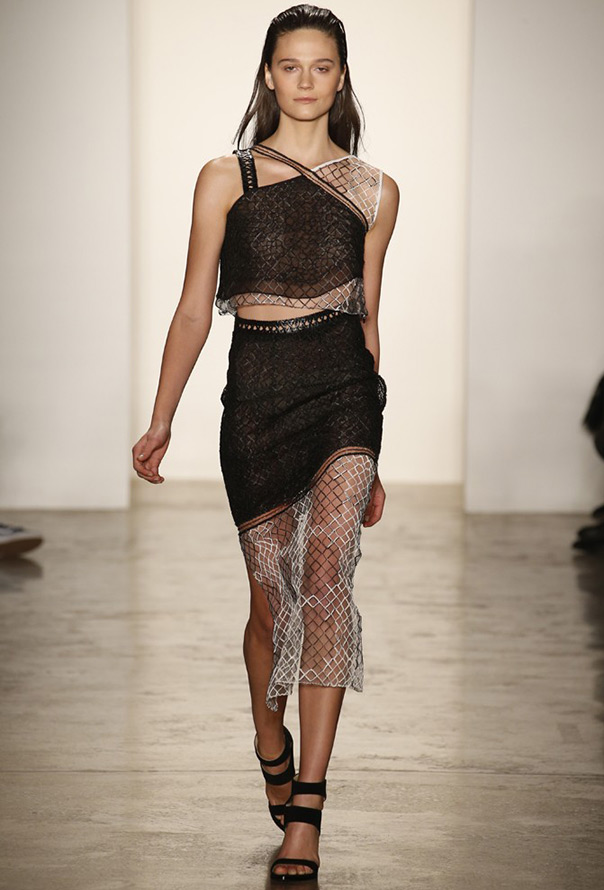
Jonathan Simkhai
Shoshanna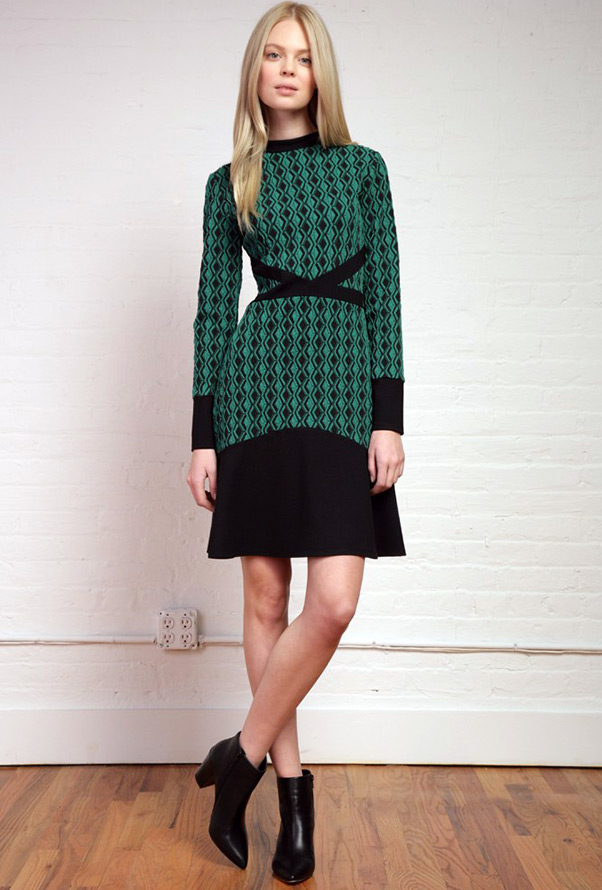
The most in a simple way Extensions of the product can be considered ribbon or lace. In this case, the strip of sewn-in material can be placed anywhere on the skirt, and not even one strip can be used, but several. Look at Burberry Prorsum or Oscar de la Renta.
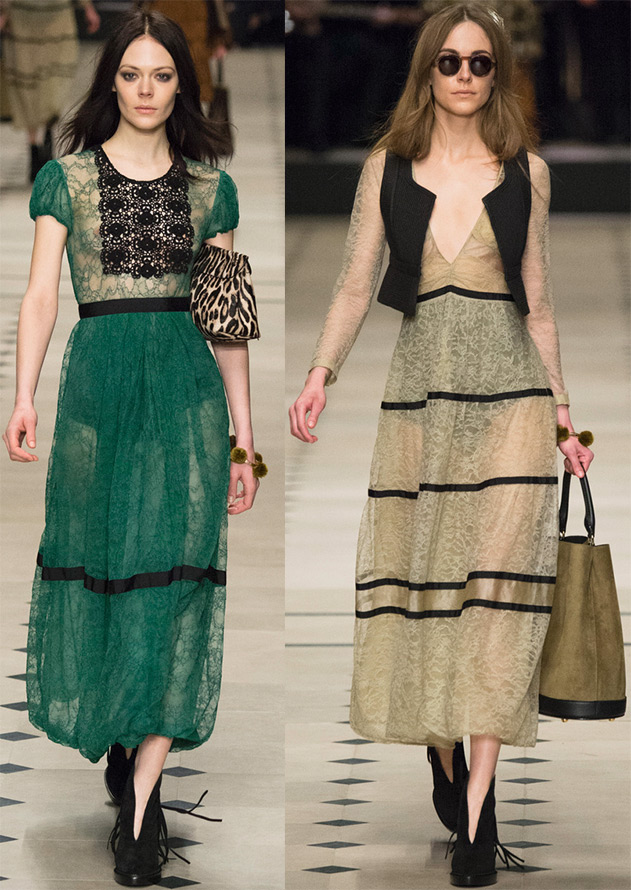
You can get a very original product if you use fringe as an extension. In this case, the length of your outfit can be from midi to maxi. The trend for the 2015-2016 season is to trim all wardrobe items with fur. By extending the product with a fur insert, you will get the most fashionable item in your wardrobe.
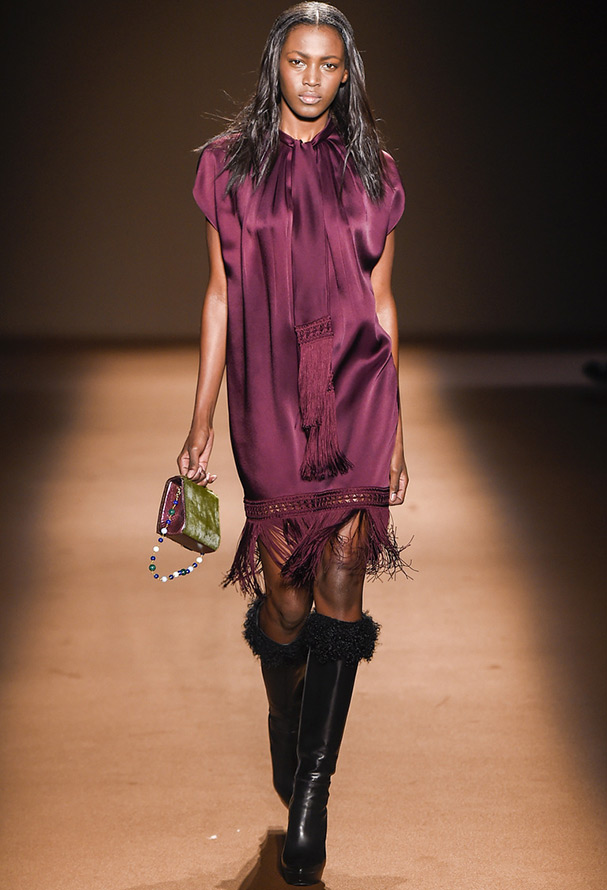
Andrew Gn
Zimmermann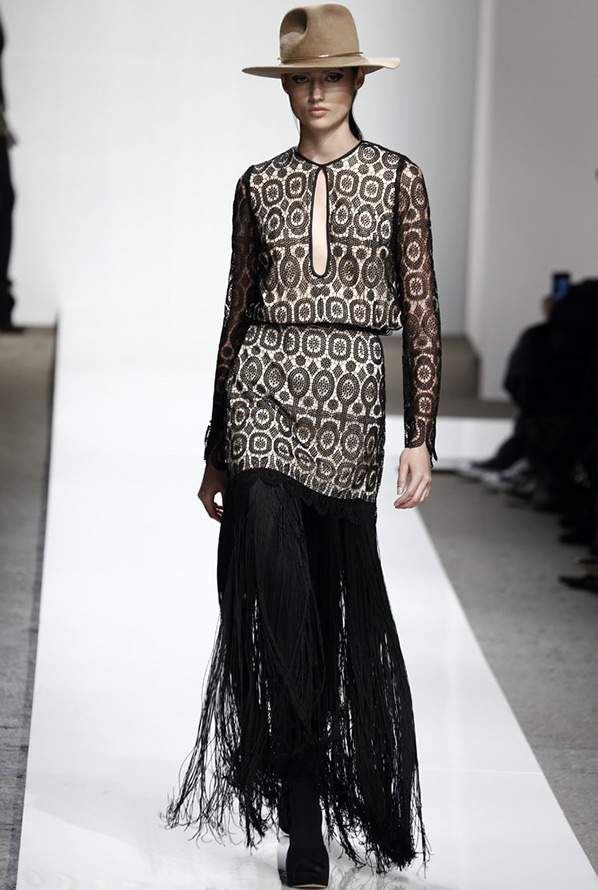
Models from the Tom Ford and PPQ collection tell us that it is possible to completely change our skirt if we make multi-stage ruffles or flounces.
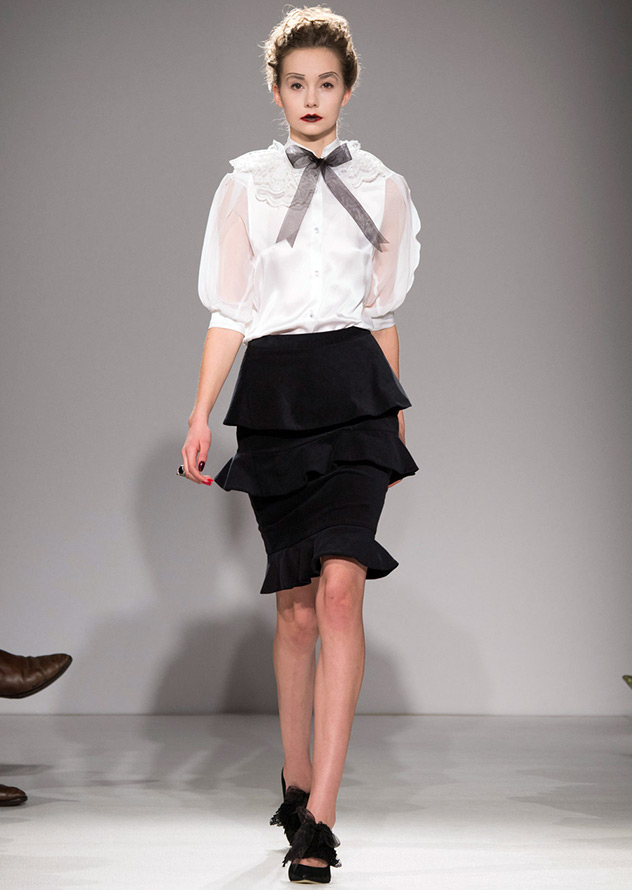
P.P.Q.
Tom Ford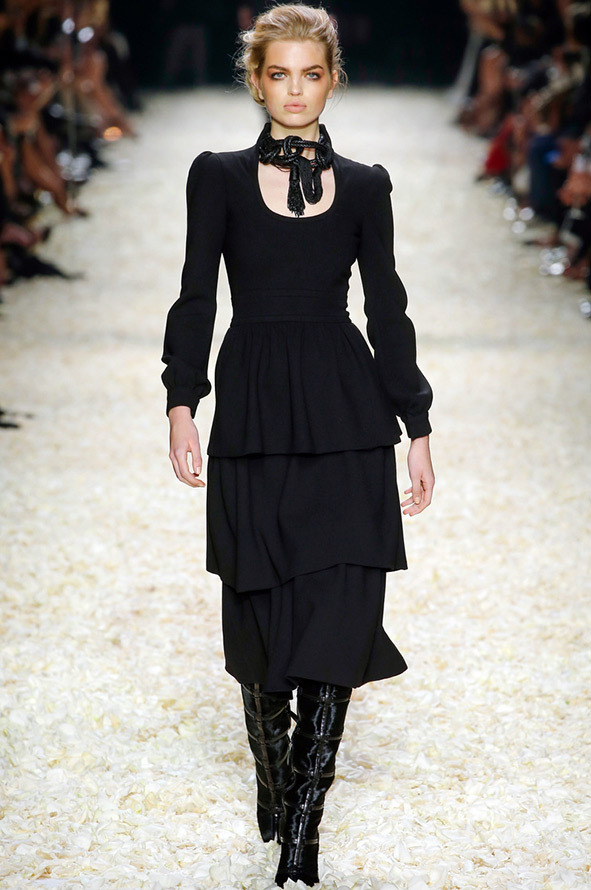
As you can see there are many options. And if you dream up your own imagination, there will be even more of them.
Lengthening a skirt is creative process, which will transform your product. It just takes time, hard work and in some cases not a lot of money.
This season includes fashion trends turned out to be long skirt; almost to the floor. What to do if your skirt is a few tens of centimeters short of its current length? There are many ways to lengthen your favorite product.
Release the hem
If the skirt is “saved” by a few centimeters, see if it is possible to release the hem along the bottom of the product.
Place along the bottom of the product
Choose a contrasting fabric or fabric that matches the skirt. Companion fabric can be combined with your blouse or accessory that you will wear with your outfit. new skirt. Braid or lace can also be used to lengthen it.
Do not use fabric that is thicker or heavier than the base fabric. It may disrupt the shape of the product. If the skirt has an unusual texture or design, you can make a decorative strip (extension) that will lengthen your product.
We select necessary materials. IN in this case white cotton and braid-sewing (ill. 1). We cut out a strip of fabric of the required length and width, taking into account all allowances for seams and folds. We process strip cuts using an overlocker. Randomly add several horizontal folds and iron them. We arrange the lace and braid in a certain order; pin, baste and stitch over the cotton strip (ill. 2). Grind off the cross sections of the decorative strip. We sew the strip to the bottom of the skirt. We delete temporary lines. Iron (ill. 3, 4).
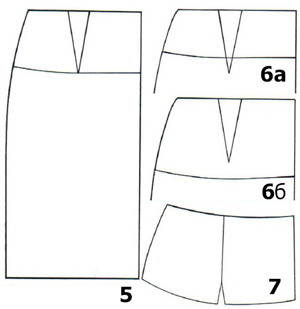
Insert between the belt and skirt panels
We rip off the belt, rip out the darts and insert a strip of fabric of the required width between the belt and the skirt.
This method is suitable for pleated skirts, wedge skirts, and any other skirt. Thanks to the yoke, you can “win” from 5 to 20 cm. A narrow yoke on a skirt visually lengthens the figure, and a wide one shortens it. The shape of the yoke can be different, it depends on the model of the skirt and your desire. If you cannot find a fabric that matches the color and texture, use any fabric for the yoke. In this case, wear a skirt with an untucked blouse.
Preparation. We turn the product inside out, rip off the belt or facing, rip out the zipper, rip out the darts. Iron seam allowances. We measure the circumference of the hips at the level where the lower edge of the yoke will be. On the skirt from the waistline, set aside a few centimeters and draw a line for the bottom of the yoke. The volume of the skirt in this area should correspond to the measured circumference of the hips at the yoke line. We cut off the excess fabric.
Yoke. You will need a pattern for the base of a straight skirt that matches your measurements. If there is no pattern, use your skirt with ripped darts.
On the back and front panels of the skirt, set the desired size of the yoke down from the waist line, draw a line for the bottom of the yoke parallel to the top edge of the skirt (Fig. 5).
If the bottom line of the yoke runs closer to the ends of the darts, then the perfect fit of the tight-fitting model is guaranteed. This skirt can be sewn from any fabric.
If the yoke line is located above the ends of the darts (Fig. 6a), then the darts on the yoke are closed. The fit of a fitted skirt will be good if the lower part of the dart is folded or integrated into the reliefs. If the model you have chosen does not provide any reliefs or folds, and the solution of the remaining dart area on the skirt is small, you can try ironing out the slack. Otherwise, choose a model with a gathered yoke.
If the yoke is located below the level of the ends of the darts (ill. 6b), then you need to extend the line of the middle of the dart to the line of the lower edge of the yoke and cut the yoke along this line. Close the dart, and a small opening will open at the bottom edge of the yoke (Fig. 7). The opened solution must be measured and cut off at the side edge of the yoke.
Cut the yoke along the marked lines from the patterns of the front and back panels of the skirt and close the darts on them. If you are modeling a yoke on a product, then transfer the found shape of the yokes of the front and back panels of the skirt onto paper.
Let's cut out a yoke from the material. We overcast and stitch the right side sections of the yoke (Fig. 8). We connect the lower section of the yoke with the upper sections of the skirt panels, overcast and iron (ill. 9). In the left side seam of the skirt we process the zipper (Fig. 10). We process the upper cut of the yoke with an undercut facing.
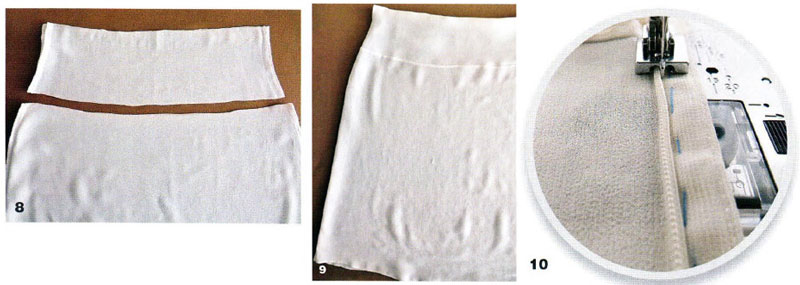
You can gain a few centimeters of skirt length by adding a belt. From the fabric we cut out a strip (= belt) of the required length and width, taking into account allowances for seams and fastening. Iron the belt lengthwise in the middle, wrong side inward (ill. 11). We pin and baste the outer side of the belt to the upper section of the skirt, folding the parts with the right sides inward (ill. 12). We grind, we grind the transverse sections of the belt. Removing basting lines. We iron the belt stitching seam onto the belt, turn it inside out, and straighten the turned ends of the belt.
Bend the longitudinal section inside belt, baste and adjust the fold along the seam of the outer side of the belt (Fig. 13). Due to the belt, the skirt became even a little longer (ill. 14). Temporary lines are deleted. Let's iron.
Insert at the bottom of the skirt
We cut out a strip of the required length and width from the companion fabric. We measure approximately 10 cm from the bottom of the product and draw a line (Fig. 15). Cut along the marked line and sew in a strip between the parts of the skirt (ill. 16, 17). The insert can be figured, asymmetrical or fancy. The skirt can be lengthened using several methods at once.

We cut out a flounce from companion fabric. The shuttlecock is cut out in the shape of a circle or spiral (ill. 18, 19). The width of the shuttlecock can be the same along its entire length, or it can be asymmetrical, as in our example. We process the lower cut of the shuttlecock in a suitable way. We baste and stitch the flounce to the bottom of the skirt in one or more tiers (ill. 20). We process the seam sections using an overlocker and iron them (Fig. 21).
Experiment, mix textures, colors and prints.
It is quite easy to sew this item of clothing with your own hands, but you should take into account the nuances. For example, cutting occurs on the bias, and during stitching the fabric is stretched unevenly under the action of the sewing machine. Also, the material can stretch, breaking the hemline, directly during wear. Therefore, before starting to finish the bottom, the newly made wardrobe item should hang on a hanger for several days.
It is not recommended to sew this product from fabric in stripes, since it is almost impossible to combine them symmetrically to maintain the pattern. Even checkered material can only be cut correctly by an experienced seamstress with a trained hand.
Despite all the subtleties of the process, a needlewoman who sews a skirt correctly will be satisfied with the result - you can wear it almost everywhere, it perfectly hides figure flaws and emphasizes advantages. It will add the desired roundness to thin girls, and it will slim girls with full hips.
Spectacular versions of the half-sun skirt can be seen in the photo.
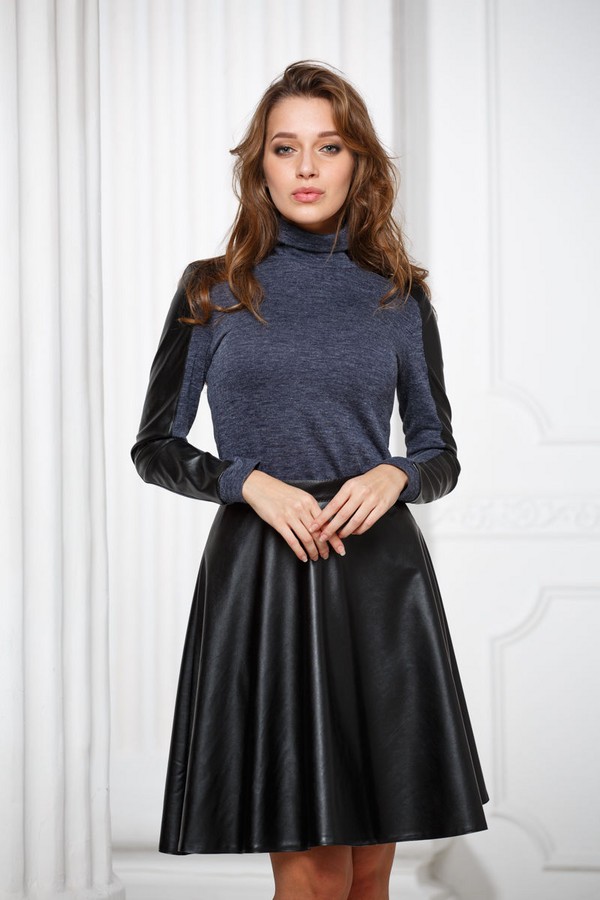
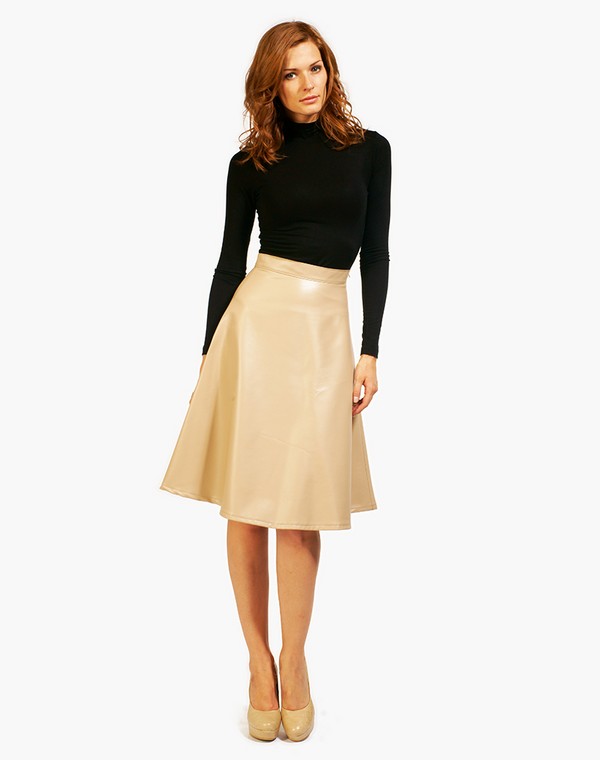
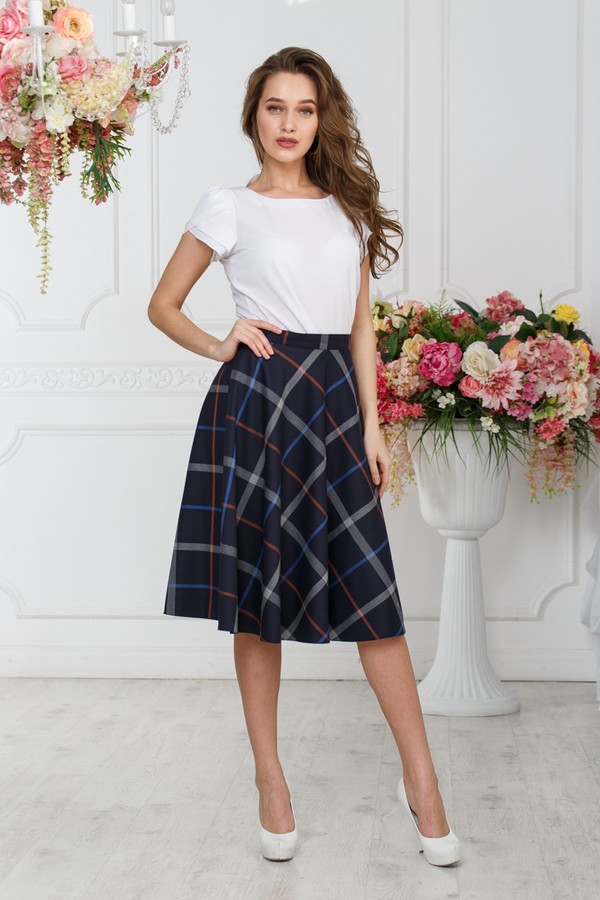
How to cut a half-sun skirt: diagram and instructions
The cut of this product is not too complicated; to create a pattern you only need two sizes:
- skirt length (Du) - you determine it yourself depending on the desired result;
- Half waist circumference (St) - you need to take measurements from the waist and divide by two.
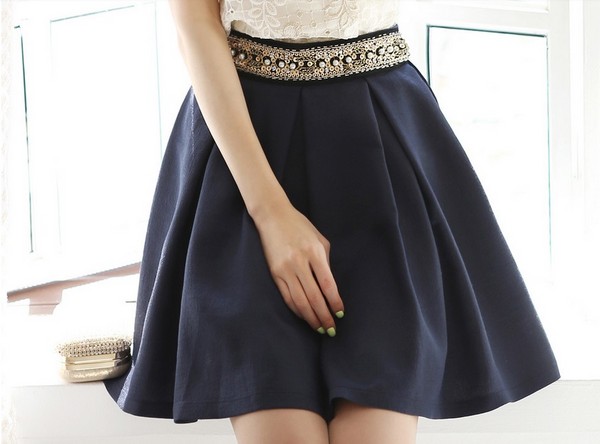
Your name this item I received the clothes because when cut it resembles half a circle, cut into two segments. The quarter circle pattern (basis for the product) is constructed as follows:
- To begin with, the main radius of the circle is set aside, which is the length (Du) + R, where the value of R is calculated by the formula: (St + 1) * 0.63. One unit in the calculation means an increase in loose fit; this value may vary depending on the type of fabric;
- the value of St in this formula may increase if you make a skirt with pleats or with an elasticated belt. If this is not taken into account, then ready product with an elastic band it will be impossible to wear;
- then draw another line of length D+R, so that they form a right angle with the vertex O. Connect their ends with an arc - this will be the bottom line. Mark the R value on this line and draw another smaller arc - this will be the waist line.
The construction is very similar to a circle skirt, so a person who has sewn it at least once will not encounter difficulties in making this model.
The pattern drawing can be seen in the photo.
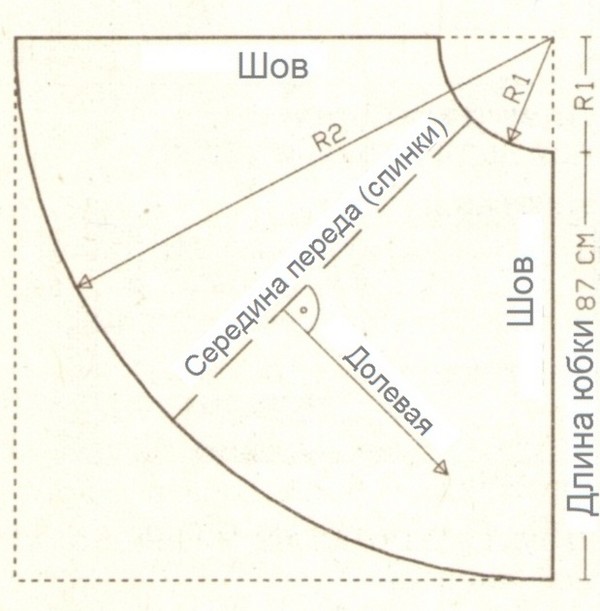
Cut out half-sun skirts on fabric
The pattern is so simple that its construction can be done directly on the material. But to avoid mistakes and unnecessary waste of material, it is better for beginners to first make a paper pattern.
If the width of the material allows, and the planned length of the product is not too long, cutting can be done on the wrong side of the folded fabric. If the width of the cut is not enough, it is laid out face down, and on the wrong side, two parts are cut side by side in a mirror image.
When cutting on the material, the cutter must remember the allowances at the waist, on the side seam (if the cut involves more than one part) and allowances for processing the bottom (from 0.7 to 2 centimeters). Each wedge is pulled back during the stitching process so that the finished product has a flat bottom.
How to lengthen a half-sun skirt
Update your wardrobe or do too short skirt less provocative, so that you can go to work in it, there are several ways:
- The most common and simplest is elongation due to lace, which is sewn to the bottom. This does not require specific skills; it is enough to choose lace that is in harmony with the material. The same lace can be used to decorate the belt and pockets to make the product look complete.
- You can sew a strip of the same fabric from which the product is made to the hem. But this method is not suitable if the skirt was purchased and not sewn at home, since it is difficult to find the same fabric. In this case, sew the cut contrasting color or a pattern that matches the material of the item of clothing.
